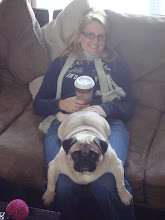Sunday, April 25, 2010
How would you explain the connection between glucose entering the body and energy created by the body to a friend, using your new biochem knowledge?
Glycolysis begins by an input from either dietary glycogen and starch or glycogen stored in your cells. The glycolysis linear reactions occur in 10 steps. The first reaction uses water to break apart glucose molecules known as hydrolysis. A phosphate group is removed from an ATP molecule of energy producing ADP. This removed phosphate group is then added to the glucose molecule forming Glucose-6-phosphate (G6P). In reaction 2, an isomerase enzyme is used that creates an isomer of G6P. An isomer has the same number of atoms and types of atoms but is configured differently. The isomer created is D-Fructose-6-phosphate (F6P). In reaction 3, 1 ATP is used to phosphorylate F6P. Most phosphorylation reactions are done so via kinases which can add phosphate groups. D-Fructose-1,6-biphosphate is created. It is important to note that the product of the previous reaction becomes the reactant of the next. Glycolysis reaction 4 cleaves the F1,6P by using an aldolase creating Dihydroxyacetone phosphate and D-Glyceraldehyde-3-phosphate (D3P) which are isomers of eachother. In reaction 5 only D3P is formed and can then be used by reaction 6. This reaction is a redox reaction. These two reactions of adding oxygen and adding hydrogen happen together. Step 7 uses a kinase to remove the phosphate group of the 2 molecules creating 2 ATP molecules. Reaction 8 isomerases the product of the previous step. For the next reaction, the removal of water, dehydration, occurs. Finally, in reaction 10 hydrolysis and phosphorylation occur. The net gain of glycolysis is 2 ATP and 2 molecules of Pyruvate created. Gross gain is 4 ATP, but because the process of glycolysis uses 2 ATP, this results in the net gain of 2. Although the process seems complicated and overwhelming, what is important to take away is the idea that through glycolysis, energy is created that is then used by the body from molecular activities to muscle movements. By looking at how glycolysis works, I have great appreciation of how our bodies function.
Subscribe to:
Post Comments (Atom)

I am not sure that some of my friends would really grasp everything that was said in this blog but as a classmate I think you summed it up really well. It was great that you made sure to note that the products of one reaction are the reactants in the next step or another reaction. They are all linked in this way and you cant have one without the other in most cases.
ReplyDeleteThe last couple sentences also were a great way to end. The process IS complicated and can seem overwhelming but it is extremely important in knowing how our bodies create energy to do the amazing things that we are capable of. Great job Renzi!!
Morgan
Robin, this is great information and shows that you really understand the process. I feel as though it could be made simpler for someone who has not taken a Biochemistry course so that they can understand it without a lot of the "scientific" lingo.
ReplyDeleteRobin I am with Morgan,If I had to explain the glucose pathway to my friends I better have a picture they could follow. That being said I thought your information was organized well and presented clearly. I sure you have a better grasp on the process now that you wrote the blog. Great job!
ReplyDelete